Everything's connected
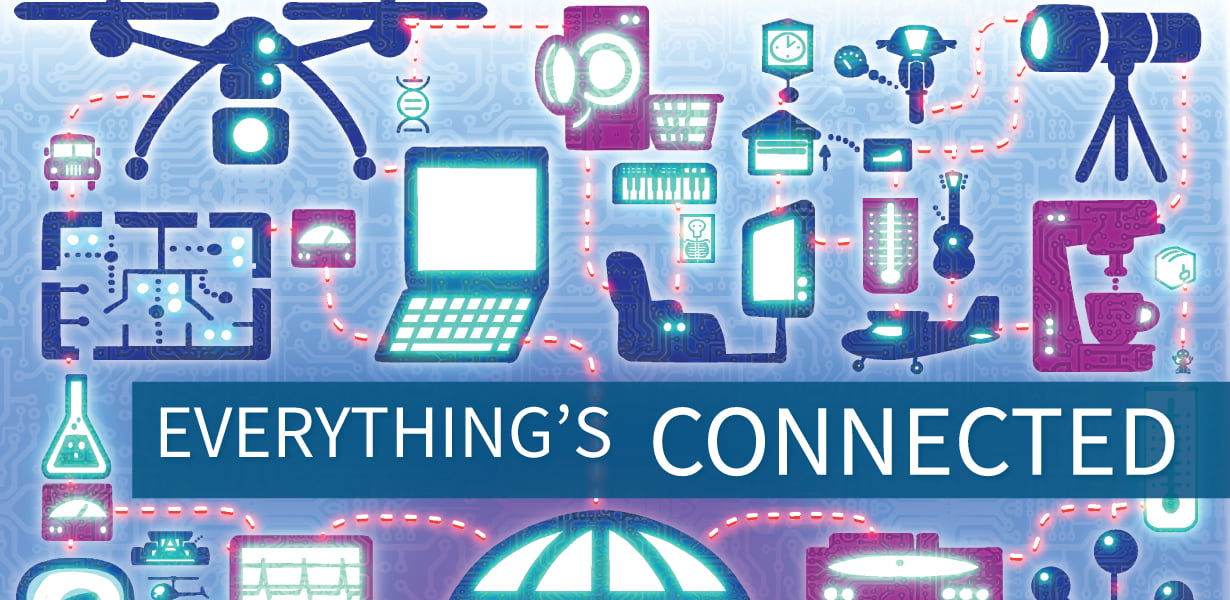
In the past five years, smartphones and wearable fitness- and health-tracking devices have become must-haves rather than luxuries. And the number of connected devices we use increases daily, including vehicles, smart thermostats, medical devices, kids' toys.
These consumer-focused connected devices are only a fraction of the Internet of Things (IoT), or the network connectivity between objects that allows them to perform their jobs. Commerce and industry have steadily increased their use of applications using the Internet of Things, including for industrial automation and processes, remote monitoring, health care, manufacturing, agriculture and transportation.
This trend is only expected to get bigger. John Chambers, former CEO and executive chairman of Cisco Systems Inc., predicted recently that 500 billion devices would be connected to the Internet by 2025, while others estimate 20 billion to 35 billion. Either way, more and more devices will comprise the Internet of Things in the next decade, including autonomous cars, mattresses that measure heart rate and other vital signs to promote better sleep, soil-moisture detectors to increase crop yield, water-use tracking apps and even an app to track if elderly people living alone are taking their medications on time. Ford Motor Co. recently announced plans for an app called FordPass that would suggest better traffic routes to Ford drivers, connect with the drivers' home to turn on the heat or air conditioning and open the garage door minutes before they arrive.
This year, more than 6.4 billion connected devices are expected to be in use worldwide, with 5.5 million new things getting connected every day, according to information technology research firm Gartner Inc. More than 21 percent of total Internet of Things use is expected to be in smart homes. In early 2014, Google paid $3.2 billion to buy Nest, a smart thermostat that uses sensors to train itself on the user's patterns. In late 2014, Amazon entered the space with the Echo, a wireless, cloud-based, voice-operated device that plays music, answers questions, gives news and weather, controls lights, thermostats and other smart-home devices, and recently introduced a smaller, less expensive version called Echo Dot.
The IoT's impact on the economy is expected to be between $3.9 trillion to $11.1 trillion per year in 2025 in nine different sectors, including vehicles, home, offices, factories, retail, worksites, human, outside and cities, with huge, untapped potential in developing countries, according to a June 2015 report by McKinsey & Co.
While the Internet of Things may make life easier by allowing more connections, it presents technical, security and privacy challenges, which faculty and graduate students in the School of Engineering & Applied Science are addressing from different angles, from developing new health-care applications to managing privacy and security concerns.
WashU Engineering makes the connections
Health care
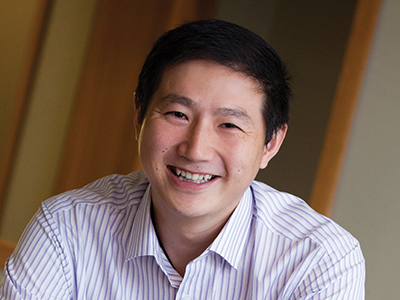
Yixin Chen and Chenyang Lu, both professors in the Department of Computer Science & Engineering, are part of an interdisciplinary team to improve health-care outcomes for the sickest patients using the Internet of Things. Since 2008, they have worked with Thomas Bailey, MD, and Marin Kollef, MD, both professors of medicine at Washington University School of Medicine, to develop an early-warning system that would alert medical staff that a patient was in peril of needing care in the intensive care unit (ICU) or was near death.
In one of the team's projects, they mined traditional clinical data of 34 vital signs from historical electronic medical records of 50,000 Barnes-Jewish Hospital patients. Their algorithms analyze the data, which has had all identifying information removed, looking for patterns that provide an early warning of any signs that the patient was deteriorating or may have a life-threatening event.
For example, a patient may have a normal heart rate but a body temperature with a pattern that matches that of previous patients who went into septic shock. The early-warning system would recognize that pattern from the historical data of previous patients and send a text to the patient's nursing team, who can take immediate action.
"Those who received an alert were eight times more likely to be transferred to the ICU and 10 times more likely to die than those who did not receive an alert," Chen said. "The alert is a very strong indicator of sudden deterioration and death."
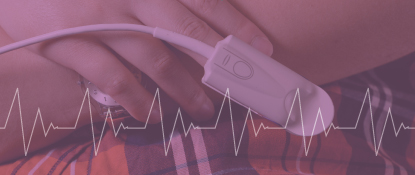
Lu, with Chen, Bailey and Kollef, developed and piloted one of the world's first large-scale clinical monitoring systems that collected real-time vital signs from patients using wireless sensors. The wireless monitoring system was tested in a 14-month clinical trial in six wards of Barnes-Jewish Hospital.
While the work showed that vital signs from patients could be taken reliably through the wireless sensor network integrated with hospital IT infrastructure, there were some roadblocks, said Lu, the Fullgraf Professor, such as the convenience of the wireless sensors today. Fortunately, wearable medical sensors are rapidly improving in both form factor and functionality, which bodes well for future adoption of the wireless clinical monitoring technology.
Now, the team is preparing a new trial with Lu's wireless sensor software, except this time, they plan to use Fitbit wearable tracking devices to gather data from patients after they are discharged from the hospital. That data will be monitored and compared to historical data to look for indications that the patient may need to be readmitted.
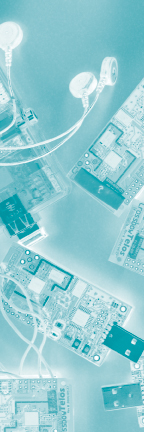
Infrastructure and industry
In addition to health care, Lu was part of a multi-university team in 2013 that developed wireless systems that could be used to detect structural damage in bridges and buildings and control them in the face of disasters such as earthquakes. The wireless cyber-physical simulator they built shed light on the challenges and limitations of both wireless and traditional structural controls, as well as potential new designs for a wireless control system using sensors installed on the infrastructure.
Wireless systems allow companies to monitor their machines and engines via the Internet to ensure they are always performing properly, Lu says. Companies with industrial automation, manufacturing, process control and oil refining processes face the challenge of having equipment in remote areas where it is difficult and expensive to lay wires. A wireless monitoring and control system using the Internet of Things could be a big cost-saver, Lu says.
"Using the Internet of Things has to save costs — there has to be bang for the buck," he says. "Traditional industries are not talking about creating new sectors, but making traditional existing economics more efficient through instrumentation of the process using the Internet of Things as a tool. All of these traditional sectors are a potential marketplace for the Internet of Things, and that's why people do the math and say this is why it will be so huge."
"Using the Internet of Things has to save costs — there has to be bang for the buck. Traditional industries are not talking about creating new sectors, but making traditional existing economics more efficient through instrumentation of the process using the Internet of Things as a tool."
— Chenyang Lu
Security and privacy
As companies use more and more connected devices and machines, it becomes more difficult to secure them. While security software is available for computers, it is not yet available for smart thermostats, webcams or industrial automation systems. Voice-activated devices may be able to pick up private conversations that could be accessed by others.
"Every form of electronics wants to connect to the network to do its job," says Patrick Crowley, professor of computer science and an expert in network security. "From the perspective of an organization, whether it is a power plant or a business or a data center, the number of connected things is going up, and the ability of the IT staff to manage them by installing software and other means is going down. These are substantive challenges that make it hard for individuals and organizations to feel confident that they've really secured their information resources."
Crowley says there are two ways to address these challenges. One is to stop using them because of the risks involved, but that is not a practical solution.
"As a thought experiment, consider your own laptop and all the ways it helps you get things done," he says. "Now imagine that you can no longer connect it to a network. How much of that value remains? Devices become very useful once they are connected."
The second option, developing new approaches and methods for securely connecting devices, is one very familiar to him. In 2011, Crowley founded Observable Networks, which developed proprietary technology to secure these networks. The company provides endpoint modeling and automated security analytics to companies in industries that need to secure their networks.
Crowley also is a major player in a new secure technology to connect digital devices known as Named Data Networking (NDN). He is principal investigator on a National Science Foundation (NSF)-funded project and heads WashU's participation in the nationwide NDN consortium.
Currently, the Internet is based on an address — every device must be able to establish a telephone call with any other device through that address. With the number of connected devices increasing daily, that system becomes unsustainable, Crowley says. In addition, the Internet uses an honor system: there is no foundation of authentication and trust in Internet protocols.
That's where NDN comes in, he says. NDN retains many of the virtues in current Internet protocols, yet addresses the shortcomings presented by the Internet of Things' cloud-based networking. It does not require that every device know the address of any other device. Instead, it requests named data, meaning that every connected device asks for the data it is looking for, and the network must determine how to supply the data.
"The way we communicate on the Internet today is dramatically more efficient and secure with NDN than it is with the Internet protocols," Crowley says. "Every packet of data in an NDN network is cryptographically signed by the entity that produced it, so when one device makes a request of another device and receives that data, that device has the ability to verify whether that signature is correct. It's a fundamentally different foundation for trust and security."
Raj Jain, the Barbara J. and Jerome R. Cox Jr. Professor in Computer Science, says security and privacy are the most important challenges in the IoT, and his group is approaching it from a different angle.
"Eighty percent of devices have no privacy, and 70 percent of devices don't use encryption," he says. "When you're using an IoT device, if your phone, the WiFi network, the cloud, the cellular network, or the user's password is compromised, the security can be breached. There are nine links in the IoT chain, and if any one of them is unprotected, strong protection in others doesn't matter."
Jain and his group are studying the security weakness in the IoT. In particular, improper life-cycle management, such as installing the device with default options, updating the firmware without proper signature checks or recycling a used device without resetting may compromise security.
"For example, when you get a notification on your computer to update a program or utility, such as Java, if you let it update without verifying that the message is from a legitimate program, you can easily compromise your computer," he says. "Everything requires two-way authentication to ensure that the server and client are both legit. In many IoT applications, client is the only one that is authenticated, leaving security holes for attackers using fake servers."
"From the perspective of an organization, whether it is a power plant or a business or a data center, the number of connected things is going up, and the ability of the IT staff to manage them by installing software and other means is going down."
— Patrick Crowley
Smart homes
Making homes more energy efficient has been a goal for nearly 40 years, but WashU engineering and architecture students now have the opportunity to build a true smart home through the university's first Solar Decathlon team. The U.S. Department of Energy sponsors a Solar Decathlon every two years and selects collegiate teams to submit an entirely solar-powered home in an international competition. Several of the 10 contests — architecture, market appeal, engineering, communications, affordability, comfort zone, appliances, home life, community and energy balance — involve the Internet of Things.
Hongxi Yin, I-CARES Associate Professor, and Pablo Moyano Fernández, senior lecturer, both in the Sam Fox School of Design & Visual Arts, are two of the faculty members leading the WashU Solar Decathlon team, which includes undergraduate and graduate students from the Sam Fox and Engineering schools. The team will work on the project for two years before participating in the competition in the fall of 2017.
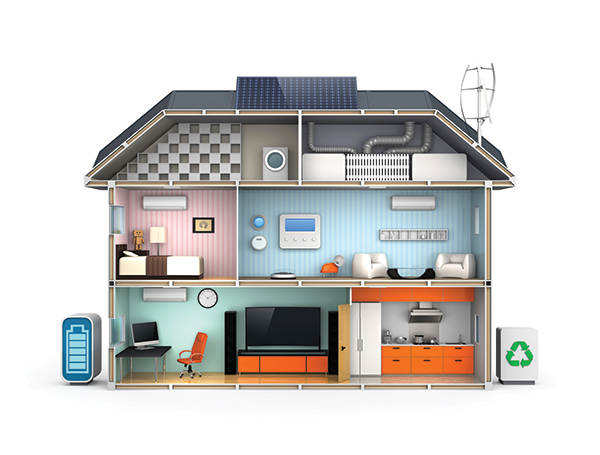 In the competition, each team has to build a home and demonstrate how it would work over a 24-hour period, including supplying energy to appliances; heating, ventilating and air conditioning systems (HVAC); computers; televisions and to charge an electric car to drive 25 miles every day.
In the competition, each team has to build a home and demonstrate how it would work over a 24-hour period, including supplying energy to appliances; heating, ventilating and air conditioning systems (HVAC); computers; televisions and to charge an electric car to drive 25 miles every day.
"We need to make sure the house uses the least amount of energy possible and is still comfortable to use," Moyano Fernández says. "The students have spent a lot of time researching sustainable strategies in general, then those in the building industry, and are learning what strategies to apply when building a house to make it more sustainable while lowering the operational cost."
The students are working in five focused groups. Lu's wireless sensor technology will be integrated into the house based on the work of students in his Wireless Sensor Networks course (CSE 521S).
"We are integrating architecture, health care, landscape architecture, art, structure, solar, mechanical engineering, electrical engineering, materials and construction management," Yin says. "The Solar Decathlon provides the platform to integrate architecture and engineering to create the most efficient, integrated products. It brings together research and education in a real-life situation."
In the lab of Humberto Gonzalez, assistant professor of electrical & systems engineering, doctoral student Runxin He is writing control algorithms for the HVAC systems in a university-owned apartment building at 749 Westgate Ave. that is being renovated as part of the university's Green Rehab project.
"Our idea is that if we can find some smart algorithms or strategies for buildings, the country's energy costs for buildings can decrease to just one-third of current usage," He said.
He's algorithm allows the apartment's HVAC system to recognize the location of each resident in the apartment and change the climate in that area for the resident's comfort, then shut off the HVAC in the rest of the apartment to save energy. In the future, this could be done through a smartphone app or wearable device, He said.
What lies ahead
Students also will be getting involved in the Internet of Things through the ArchHacks hackathon hosted at WashU Nov. 4-6. More than 500 college students will gather for 48 hours to collaborate, solve problems and create solutions for the HealthTech theme. Sponsors include big names in the health tech industry, including ExpressScripts, Centene Corp. and Pfizer Inc., as well as Misfit and Google. Sixteen WashU undergraduate students are coordinating the hackathon.
Alumnus and Engineering National Council member Gaurav Garg, founding partner of Wing, a venture capital firm in Silicon Valley, was early to invest in the Internet of Things. In 2004, he began working with Jahangir Mohammed, who founded Jasper, a company that allows companies to turn their Internet of Things products into successful services businesses. On Feb. 3, 2016, Cisco acquired Jasper for $1.4 billion.
In a blog post, Garg, who has been a member of Jasper's board for 11 years, wrote that the acquisition "marks a significant milestone in the Internet of Things." As of that day, more than 3,500 companies ran Internet of Things services through Jasper's platform.
"I would say the Internet of Things is the most important thing going on in the world right now," says Garg, who earned bachelor's degrees in electrical engineering and computer science in 1988 and a master's in electrical engineering in 1990.
"The physical world will be transformed by being connected," he says. "We'll have intelligence on what's going on in the real world all the time."
"Our vision of the future is very constrained by what we have now. But for the next 30 years or more, we're going to see many apps for physical objects appear that we can't even imagine today."Back to Engineering Momentum
— Gaurav Garg
